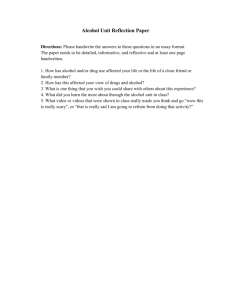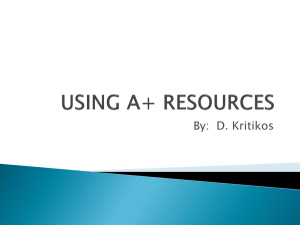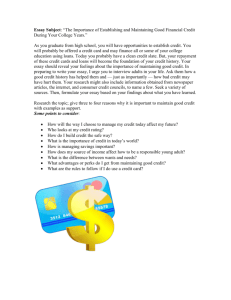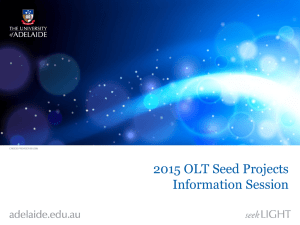Language challenges international students face
advertisement
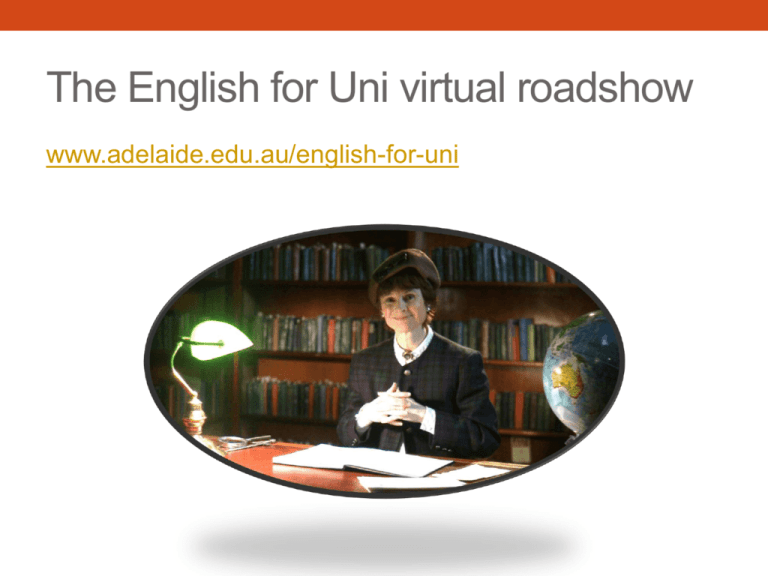
The English for Uni virtual roadshow www.adelaide.edu.au/english-for-uni Online resources to support international students' English language development Dr Fiona Henderson & Dr Shem Macdonald Victoria University Dr Julia Miller The University of Adelaide Funded by the Australian Government Office for Learning and Teaching. Articles (a/an/the) – Thanks a Million Outline 1. How do you currently teach grammar? 2. Genesis and development of our OLT project 3. Rationale for this approach 4. Content 5. Feedback and evaluation 6. Reflection 7. Discussion and questions Essay writing – Essay Chef 2. Genesis and development • Flinders Foundations of University Teaching course – • • • • • articles (a/an/the) Flinders Learning and Teaching Innovation Grant – oral presentation skills video Home made articles video Ms Parrot the detective – OLT seed grant Home made passives and essay writing videos Ms Parrot – OLT Innovation and Development grant Conditionals – If You Love Me 3. Rationale for this approach • Need for accurate expression, as this can be taken to demonstrate competence in a discipline (Master, 1997) • Humour (Slate, LaPrairie, Schulte, & Onwuegbuzie, 2009) • Evaluation of seed grant project • Existing websites are more traditional – ‘talking heads’ or exercises • This project seeks to be more engaging – videos that tell a story; interactive exercises with feedback 4. Content What would you include on an English grammar website for international EAL students? articles tenses oral presentation skills passives conditionals essay writing prepositions The passive voice – Stolen on the Outback Express Prepositions – With a Revolver in the Library Teaching tenses – You’ve Got Talent! . . . and we have songs! 5. Feedback on the website so far Figures for 3 – 9 November 2014 Pageviews • 1558 • Average 2 minutes 22 seconds • 45% returning visitors Visitors’ countries • Australia • China • Kazakhstan Access to website • Directly to the website • Via Google Evaluation – 27 teachers Agree or strongly agree The materials stimulated my interest in teaching this subject. 91% The materials provided clear explanations. 100% The use of humour in the video stimulated my interest in the content. 88% Evaluation – 27 teachers Before using the resource: I could understand many things about this topic and could create materials and teach the content to other people – 62% After using the resource: I will be able to use what I know about this topic to create materials and teach the content to other people – 85% Clarity and range of exercises. More exercises Evaluation – 36 students Agree or strongly agree The materials stimulated my interest in learning about this subject. 88% The materials provided clear explanations. 91% The use of humour in the video stimulated my 69% interest in the content. The way actors were using brainstoming before starting work, doing research and planning what to do next and after to prepare conclusion Add pronunciation examples. Shorter videos. Evaluation – 36 students Evaluation – 36 students Dr Kate Wilson – external evaluator Six focus groups already – more in December • 2 groups of lecturers • 4 groups of students: • EAP/ ELICOS students (University of Adelaide), • International Masters students (Edith Cowan University,) • Mature age native speakers (University of Canberra) • 1st year uni students (Henan University – interviewed via Skype) Positive comments from teachers •creative •immediately hilarious •simple •clear •convenient: it’s good because we can do it at home, when we want to do it. •quirky •classical •very, very useful •attractive •interesting •it’s a good opportunity for students to improve English very quickly •very creative - fantastic •open – anyone can access it •engaging •very ordered •comprehensive Student comments The difference between knowing what you should do and actually getting it. Yesterday I was doing my [final paper] and I could write it faster than before and I could put many sentences in the passive and it was better than before and I did it faster . . . I was more confident. I knew about the passive before but I didn’t use it. Especially with the referencing, I thought ‘Oh, is that what you mean’? So I got it. Suggestions made by focus groups • Include sub-titles with the videos • Break the videos into smaller chunks so that you can review them easily • Include more diagrams and colour • Use smaller blocks of text • Add a discussion forum, or Q and A capability • Add a ‘share’ button All followed up 6. Highs and lows Great team, including academics, project manager, evaluator and website developer Capacity building Seeing the website and videos go live Image by avanzero Intellectual property complications Administration – contracts, paying for acting participants Focus group timing and rewards Image by johnnyberg 7. Discussion and questions • How might you use this website? References Biggs, J. (2011). Academic: SOLO taxonomy. Retrieved from http://www.johnbiggs.com.au/solo_taxonomy.html Master, P. (1997). The English article system: Acquisition, function, and pedagogy. System, 25(2), 215-232. Slate, J.R., LaPrairie, K., Schulte, D.P., & Onwuegbuzie, A.J. (2009). A mixed analysis of college students’ best and poorest college professors. Issues in Educational Research, 19(1), 61-78. Retrieved from http://www.iier.org.au/iier19/slate.html Zhang, Q. (2005). Immediacy, humor, power distance and classroom communication apprehension in Chinese college classrooms. Communication Quarterly, 53(1): 109-124. doi: 10.1080/01463370500056150 The English for Uni website www.adelaide.edu.au/english-for-uni
